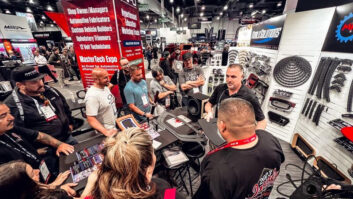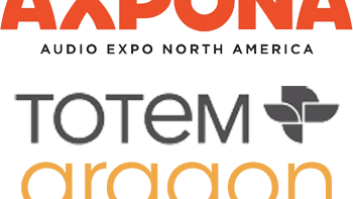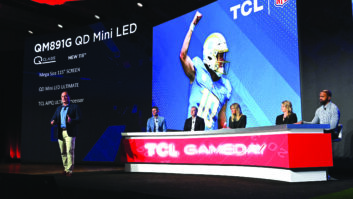? Uniden introduced its first Flex-format pagers and a new single-line alpha pager. The Flex pagers are the top-display FX9400, due late in the fourth quarter, and side-display FLX9050, due in the first quarter of 1996. Pricing wasn’t disclosed. The single-line alpha will store up to 2,000 characters compared to competing models that store up to 1,000 characters. Retail pricing is expected to be less than $100 when shipments begin in December.
The company also announced that it quadrupled its budget for consumer and trade advertising to promote the Uniden name. The 12-month multimillion-dollar campaign began in August. USA Today will be among the consumer media.
? Samsung Telecom of Deerfield Beach, Fla., which branched out earlier this year into pagers from business telephone systems, has begun to market pagers under its own brand name to complement its OEM pager business. The company will stress “value for the dollar compared to other brands in the same price range,” said president Gavin Bruce. A top-display numeric will be joined this month by the company’s first alpha model. Probably by the end of the first quarter of 1996, Bruce said, Samsung will introduce a numeric model that displays biorhythm information.
? Panasonic Communications And Systems plans to re-enter the alpha-numeric pager market after a lapse of several years and introduced its first side-display numeric pager — the EP-2L Octiva, a synthesized model that will probably retail for about $99 when it ships by the end of the year. One of two new alpha models is the EP-3C, which will feature a one-line scrolling display when it ships in March at an expected retail of $119. A four-line alpha, the EP-5A, is due in mid-1996 at a price to be determined.
? Motorola launched its fourth-quarter pager ad campaign, its largest to date and the first to include radio. The 60-second radio spots feature music tailored for different station formats. The 15-second TV spots begin in November. All spots focus on paging’s benefits. The company will continue its regular print campaign, which includes ads in vertical magazines to business users.
In other news, Motorola has introduced the industry’s first cellular battery to incorporate a removable numeric pager. The RSVP ships in December at a suggested retail of $259. A Flex-protocol version is due in February. The NiMH battery, designed for Motorola’s MicroTAC and retail lines, provides one hour of talktime or eight hours of standby. RSVP is targeted to phone users who want to screen calls, cut airtime bills, and extend phone-battery life.
? PageMart has implemented what it calls a universal e-mail gateway, which lets people transmit messages to a PageMart paging subscriber via the Internet, X.400 data networks, and most major e-mail applications used by businesses. The gateway, called the PCS Enterprise Connection, accepts the aliases and addressing formats used by different e-mail systems. The service also provides senders with a confirmation that a message was sent by PageMart.
? PageNet becomes the first company to provide wireless messaging service to Sharp’s Zaurus keyboard-enhanced PDA. From a PC, the Internet, or through an operator-assisted service, consumers will be able to send messages, calendar and appointment book updates, and other information to a PC Card Type II paging receiver inserted into the Zaurus. Additional details were unavailable.
? Gemini of Clifton, N.J. plans to reduce the price of its wireless data interface now that the technology is available directly from its inventor, Telular, instead of indirectly through licensee Spectrum Cellular, which has liquidated. The renamed Axiom Cellular Data Interface with Telular Inside will retail for $149 to $199 compared to a previous $249 to $299, said Gemini VP Robert Schumacher.
Gemini also plans to take over marketing of Telular’s CellDock, whose price it wants to reduce from the current $550 to make it a viable retail product. “We hope to get it to $250 to $299,” Schumacher said. The CellDock cradle supplies power to, and recharges the battery of, a handheld portable phone. Designed for use as a second phone line for the home or for use at vacation homes, the product rings other phones in the house when connected to a home’s telephone wiring.













